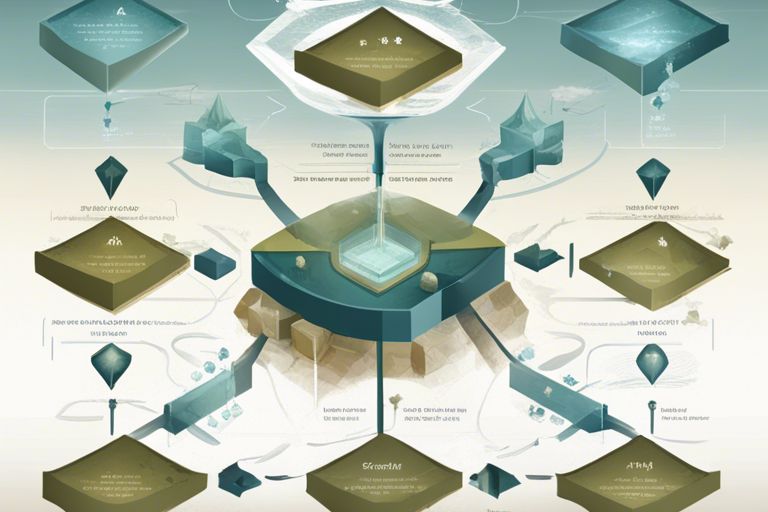Are you tired of setting unclear goals and feeling like you’re constantly chasing after something undefined? Setting ambiguous goals can lead to confusion, frustration, and a lack of direction in your life. However, by following a few simple steps, you can learn how to set ambiguous goals and ultimately create clarity in your life. In this blog post, we will explore the importance of setting clear and specific goals, the benefits of embracing ambiguity, and practical strategies for turning unclear goals into clear action plans. By the end, you’ll have the tools you need to take control of your goals and create a clear path toward success.
Understanding Ambiguity in Goal Setting
Your ability to set ambiguous goals and create clarity is essential for your personal and professional growth. Ambiguity in goal setting refers to the lack of clear and specific objectives, which can lead to confusion, indecision, and unproductive outcomes. By understanding the nature of ambiguity in goal setting, you can learn to harness its potential for creating clarity and direction in your pursuits.
Defining Ambiguous Goals
Ambiguous goals are those that lack clarity, specificity, and a clear path for achievement. When you set ambiguous goals, you may find yourself unsure of what you are working towards, leading to frustration and a lack of motivation. These goals are often broad and open to interpretation, making it difficult to measure progress and determine success. Without a clear understanding of what you are aiming for, you may find yourself feeling lost and directionless in your endeavors.
Common Pitfalls
One common pitfall of setting ambiguous goals is the tendency to procrastinate or become easily distracted. When your goals are unclear, you may struggle to prioritize tasks and allocate your time and resources effectively. This can lead to a lack of progress and a feeling of being stuck in a perpetual state of uncertainty. Additionally, setting ambiguous goals can also lead to low accountability, as it becomes challenging to hold yourself or others accountable for achieving vague objectives. This can result in a lack of motivation and a diminished sense of purpose in your pursuits.
Strategies for Achieving Clarity
While setting ambiguous goals can help you think outside the box and embrace creativity, it can also lead to confusion and lack of direction. To achieve clarity, it’s important to implement specific strategies that help you navigate the tension between ambiguity and clarity. One approach is to explore the tension between clarity and ambiguity in your goals, which can provide valuable insights into creating a balanced approach. You can learn more about this in the article Exploring the Tension between Clarity and Ambiguity in…
Breaking Down Ambiguous Goals
When faced with ambiguous goals, it’s essential to break them down into smaller, more manageable parts. This allows you to focus on specific aspects of the goal and determine the most important aspects that need clarity. By deconstructing the goal, you can identify the potential dangers and potential positive outcomes associated with each part, ultimately creating a clearer roadmap for achieving success.
Establishing Clear Milestones
To bring clarity to ambiguous goals, it’s crucial to establish clear milestones that mark your progress. These milestones serve as checkpoints along the way, allowing you to assess your achievements and make any necessary adjustments to your strategy. By setting clear milestones, you provide yourself with short-term clarity that contributes to the overall clarity of your long-term goals.
The Role of Feedback
Feedback plays a significant role in gaining clarity when dealing with ambiguous goals. Seeking feedback from trusted sources can provide valuable insights and perspectives that you might not have considered. It can also alert you to any potential pitfalls in your approach and help you identify positive progress towards your goal. By incorporating feedback into your goal-setting process, you can continue to refine and clarify your objectives.
Tools and Techniques
Now that you understand the importance of setting ambiguous goals to create clarity, it’s time to explore some tools and techniques that can help you in this process. One valuable resource is a LinkedIn article titled Ambiguity and the Answer: 5 Practices to Create Clarity, which provides insights into practices that can help you navigate ambiguity and gain clarity in your goal-setting.
Visualization Methods
Visualization is a powerful technique that can help you make ambiguous goals more tangible. By creating a visual representation of your goals, you can gain a better understanding of what you want to achieve. This can be as simple as creating a vision board or using visualization exercises to imagine yourself achieving your goals. Visualizing your success can motivate you and provide clarity on the direction you want to take.
Accountability Mechanisms
When setting ambiguous goals, accountability is crucial for maintaining focus and making progress. By establishing accountability mechanisms, such as sharing your goals with a mentor or friend, or setting regular check-ins with yourself, you can keep yourself on track and ensure progress towards your objectives. This adds a layer of responsibility to your goal-setting process, ultimately contributing to the creation of clarity in your actions.
Adapting and Overcoming Obstacles
Unlike specific goals, ambiguous goals will present you with various obstacles along the way. It’s essential to develop resilience and flexibility to navigate through these challenges effectively. A great resource for building up tolerance for ambiguity at work can be found here. This will help you develop the skill to handle uncertainty and be comfortable with not having all the answers right away. By adapting and overcoming obstacles, you will gain a sense of confidence in your own ability to handle the unknown and push through adversity.
Recognizing and Adjusting Goals
In the face of ambiguity, it’s crucial to recognize when a goal needs to be adjusted. This means being open to changing the original plan and finding new ways to achieve the desired outcome. You must be able to quickly recognize when a goal is not working and make necessary adjustments. This will require you to stay attentive and agile, regularly evaluating your progress and making changes as needed to keep moving forward. By doing so, you demonstrate your capability to adapt and remain focused on the ultimate target, no matter what obstacles come your way.
Resilience and Flexibility
Building resilience and flexibility is crucial when dealing with ambiguous goals. This means having the ability to bounce back from setbacks, to overcome unexpected challenges, and to remain adaptable in your approach. By being resilient, you are able to stay focused on your end goal and not be derailed by initial roadblocks. Flexibility allows you to adjust and pivot as needed, ensuring that you stay on track and continue making progress. Having these traits will not only help you overcome obstacles but also position you as a strong and dependable leader who can handle any curveballs that come your way.

Conclusion: How to Set Ambiguous Goals and Create Clarity
Upon reflecting on the process of setting ambiguous goals and creating clarity, you have learned that embracing ambiguity can actually lead to greater clarity and success in achieving your objectives. By setting broad, open-ended goals, you allow yourself the flexibility to explore different paths and possibilities, ultimately leading to a clearer understanding of what you truly want to accomplish. Through this process, you have also developed the skill of honing in on key priorities and finding innovative solutions. Remember, setting ambiguous goals doesn’t mean losing focus, but rather gaining insight and perspective. Trust the process and see how it can transform your approach to achieving your goals.




